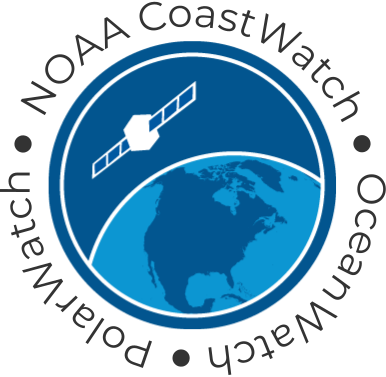| Date |
October 7, 2021
|
|---|---|
| Content Type |
Event Summary
|

|
The CoastWatch / OceanWatch / PolarWatch Program (CW / OW / PW) held its annual science meeting September 27-30, 2021, hosted virtually by the East Coast Regional Node. The meeting was a chance for the six regional nodes and the CW/OW/PW Central Operations team to convene with data users and scientists on the progress of current projects, the needs of the user community, new satellite data products including those from upcoming satellite missions, and the status of applications and tools for meeting environmental concerns. In particular, multiple presentations and discussions at the meeting highlighted the use of satellite data in environmental management, demonstrating the value of NESDIS’s satellite data as well as remotely sensed data from other federal agencies.
Approximately 30-50 individuals attended each session of the 4-day meeting. User engagement topics included the role of remote sensing products in guiding aquaculture activities and fisheries management, as well as updates and planning for higher resolution image products (Sentinel-2, Landsat) to support water quality and algal bloom monitoring. Satellite data users presented on the environmental issues they face and their needs for satellite data, such as commercial aquaculture farmers and state health agencies and local community groups monitoring algal blooms. Federal agencies (EPA, NASA, USACE and NOAA) demonstrated the web and smartphone tools they have in development to meet some of these needs.
Technical discussions included CW/OW/PW efforts to test cloud computing and the coordinating of data catalogs across the CW/OW/PW nodes and Central Operations to provide consistent services to users. A major advancement in CW/OW/PW’s remote sensing education program in the past year was the development of all-virtual classes with narrated video lessons and improved tutorial modules. Near term improvements for the training program were discussed, for example holding a combination of in-person and virtual classes, tailoring more classes to meet specific user interests, and developing an online remote sensing learning portal.
The new capabilities expected from the following future satellite missions were presented by speakers from both NASA and NOAA: Plankton, Aerosol, Cloud, ocean Ecosystem (PACE), Geostationary Littoral Imaging and Monitoring Radiometer (GLIMR), and Geostationary Extended Observations (GEO-XO). The speakers outlined the data improvements from these missions and new efforts to engage science teams in applications needed by the user community, e.g. the PACE Early Adopter Program. CW/OW/PW and SOCD presenters in the Early Adopter Program described their own awarded projects to advance the utility of data from PACE.
The meeting concluded with remarks by Veronica Lance, CW/OW/PW Program Manager, on the current state of the CW/OW/PW program and its future directions. CW/OW/PW will continue expanding its role in the data value chain, converting operational data to information, knowledge and finally to user decision-making. During the meeting, several areas where NESDIS, STAR and CW/OW/PW can improve its commitment to data users and engagement were highlighted:
● Generating multi-mission, consistently processed, long-term data time series
● Providing high spatial resolution data from missions such as Sentinel-2, Landsat, and their derived products
● Meeting much-requested user needs with specific derived products for environmental management, monitoring and research, such as Total Suspended Matter, Phytoplankton Functional Types, Primary Productivity, and others.
● Increasing understanding of data product uncertainties through: additional resources toward data validation, communicating product accuracy for users, adding quality indicators into data files.
● Helping users choose appropriate data quantitatively and with improved search, discovery and distribution tools.
